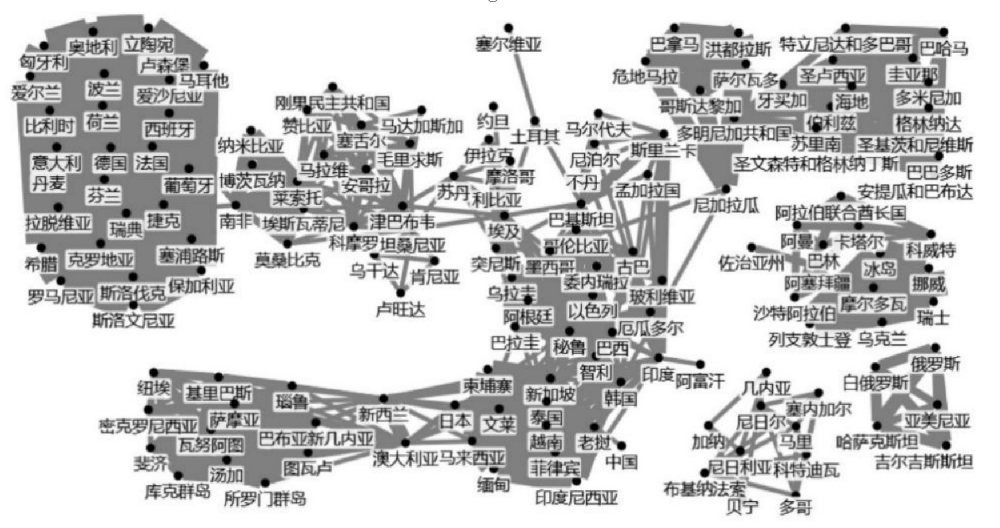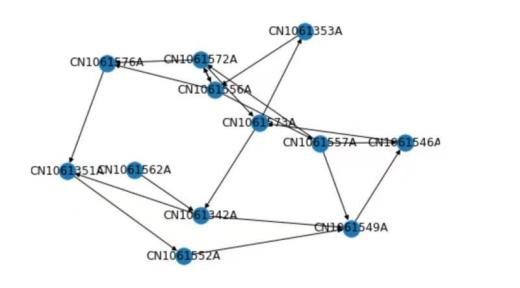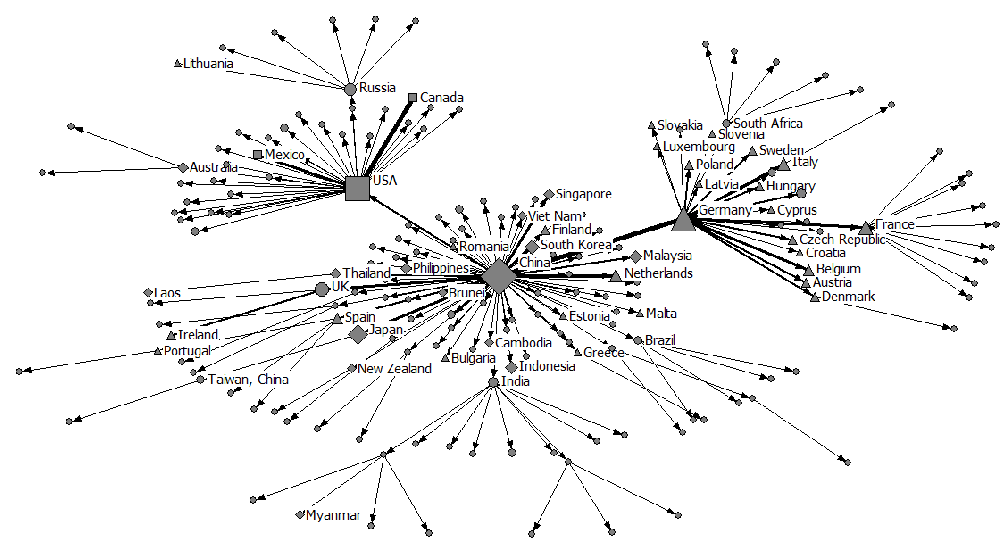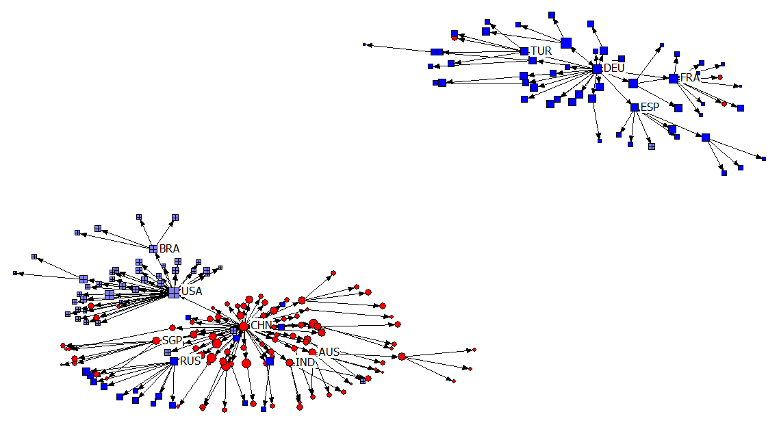Global FTA Network
发布时间:2024-10-06
浏览次数:88
This analysis examines the global Free Trade Agreement (FTA) network using data on regional trade agreements signed by various countries from DESTA and the World Trade Organization (WTO). The schemati···
This analysis examines the global Free Trade Agreement (FTA) network using data on regional trade agreements signed by various countries from DESTA and the World Trade Organization (WTO). The schematic representation of the global FTA network in 2022 is shown below.

Firstly, the establishment of agreements among countries is continually fostering new connections, resulting in a tighter global FTA network. Secondly, the FTA network exhibits a "hub-and-spoke" structure, with economies such as the European Union, ASEAN, Chile, Peru, Australia, and New Zealand serving as pivotal hubs of the FTA network. Owing to political considerations, the United States exclusively enters into FTAs with its allies, while China faces considerable challenges in negotiating agreements with developed nations, resulting in both countries rarely formulating more than one or two preferential rules of origin with other nations; hence, they occupy more peripheral positions within the network. Thirdly, the global FTA network reveals regional characteristics. There are two primary regional modules within the FTA network: one is a developed country-dominated network module composed of the European Union and its associated islands (or territories), while the other consists of an emerging economy-dominated network module made up of ASEAN, Chile, and other South American nations, as well as Pacific countries like Australia. Furthermore, the FTA regional networks formed among African, Caribbean, and Middle Eastern countries also represent significant modules within the broader FTA network.























